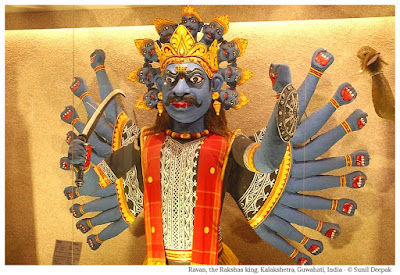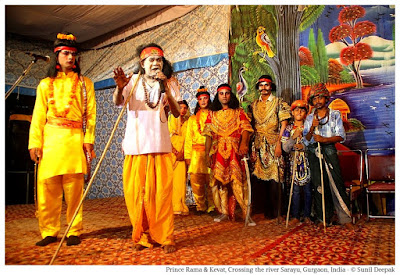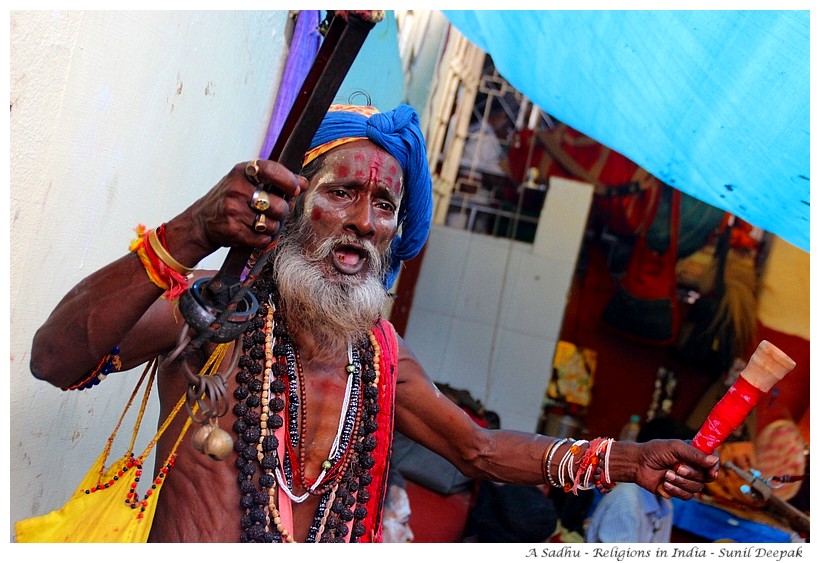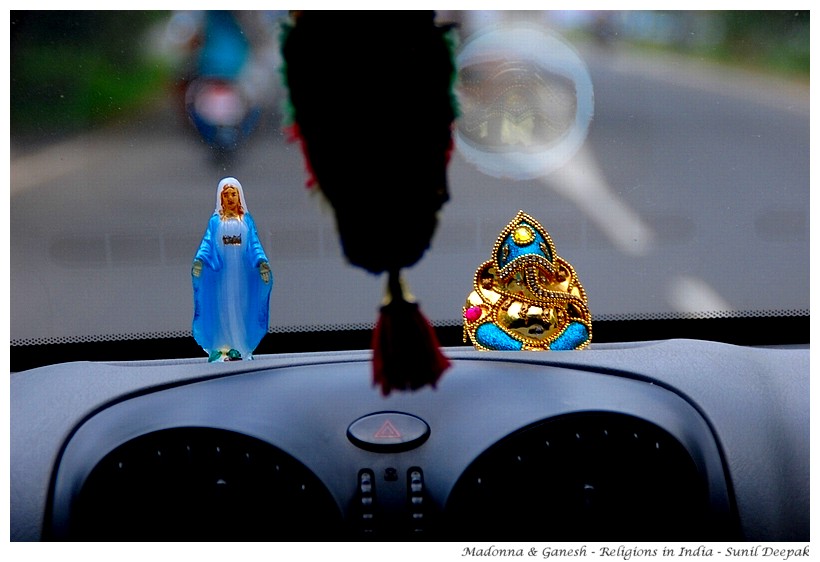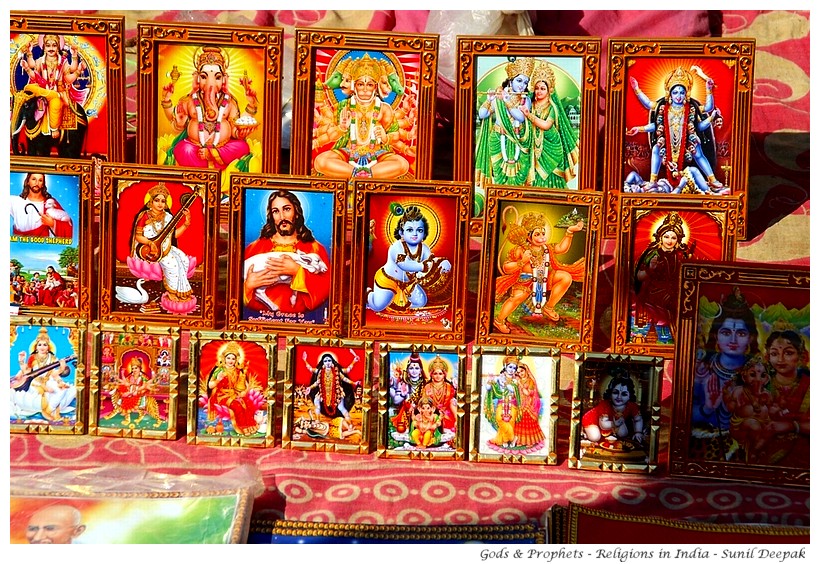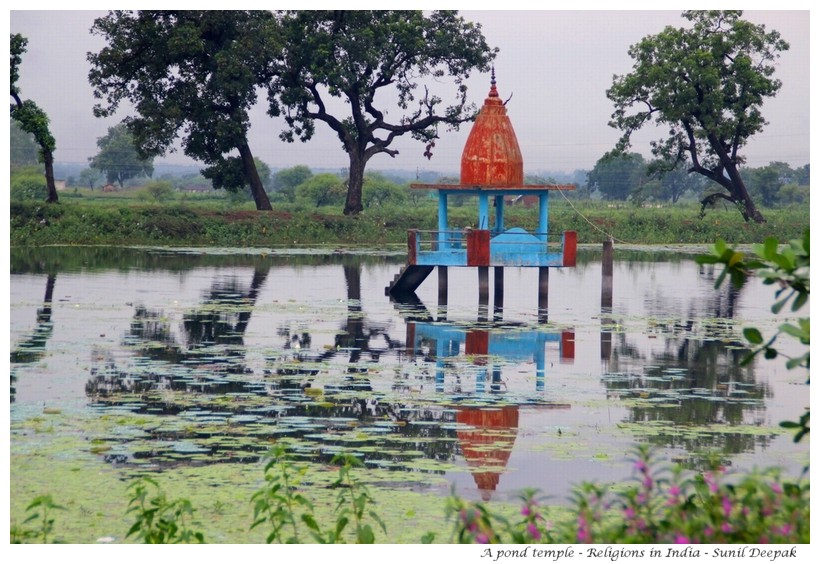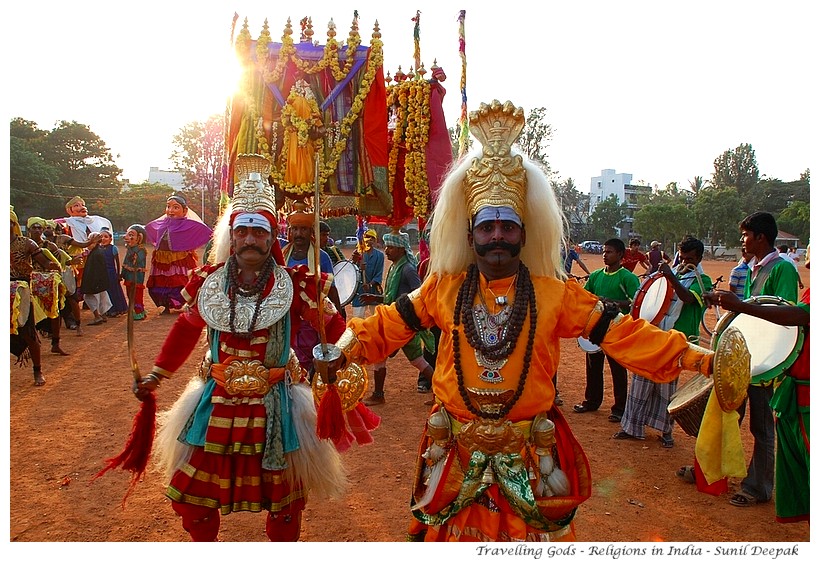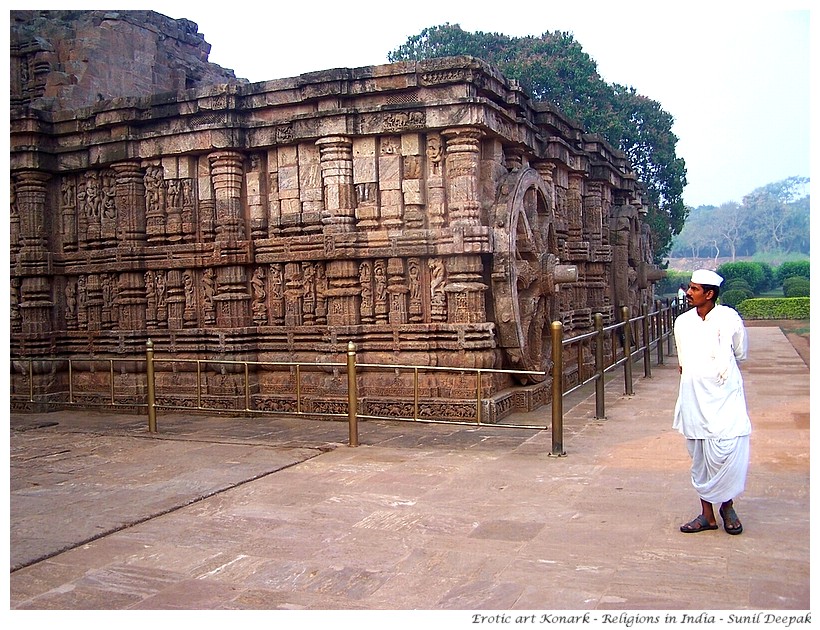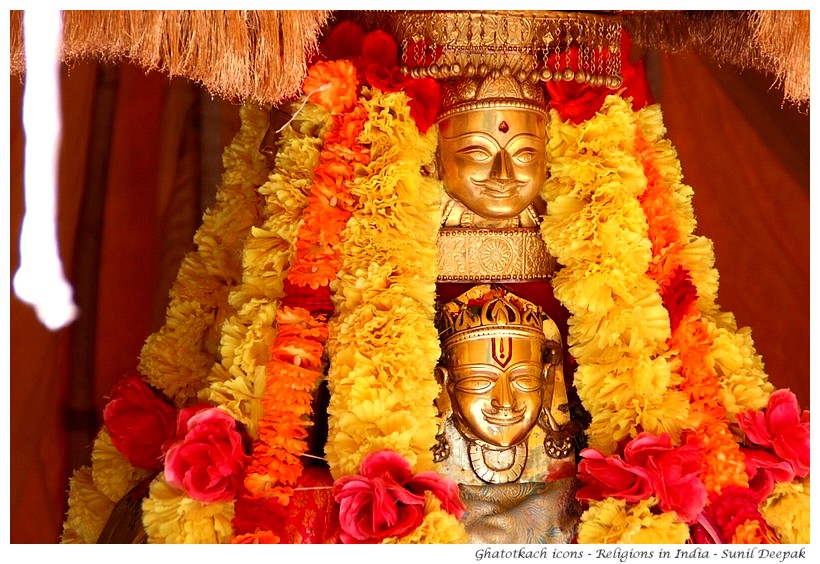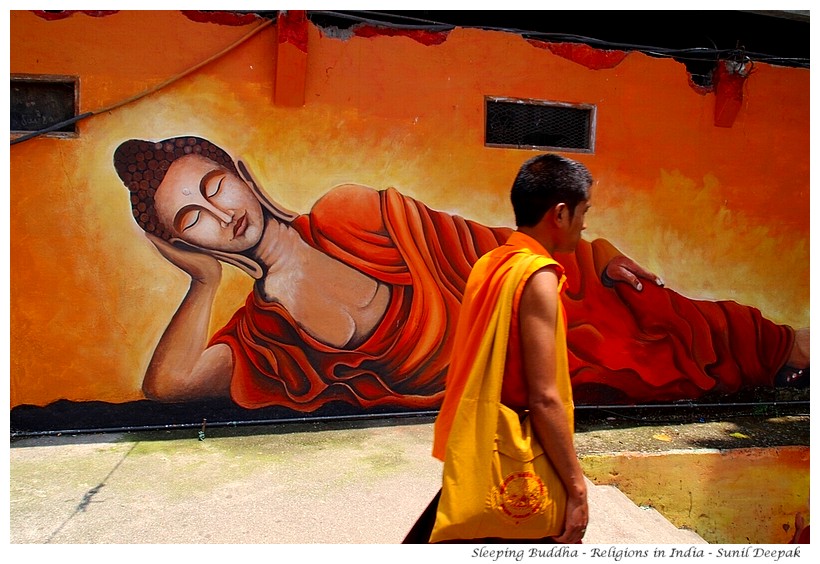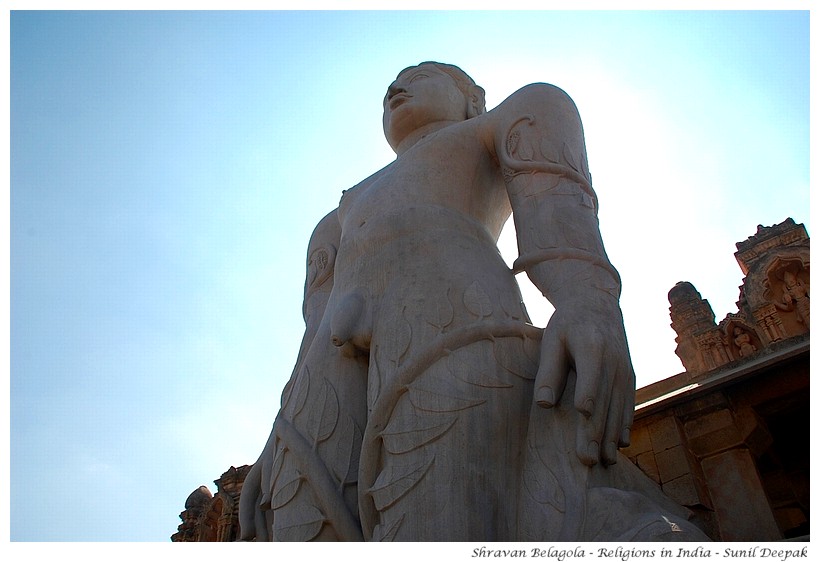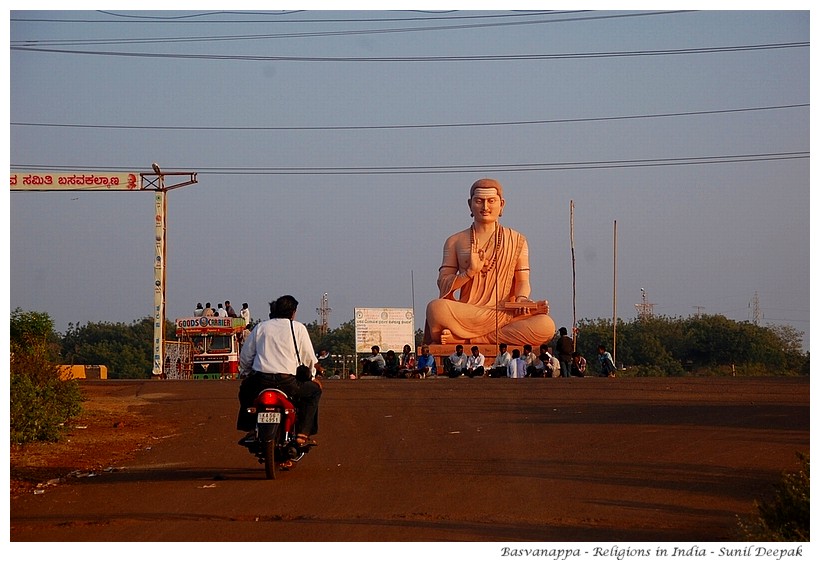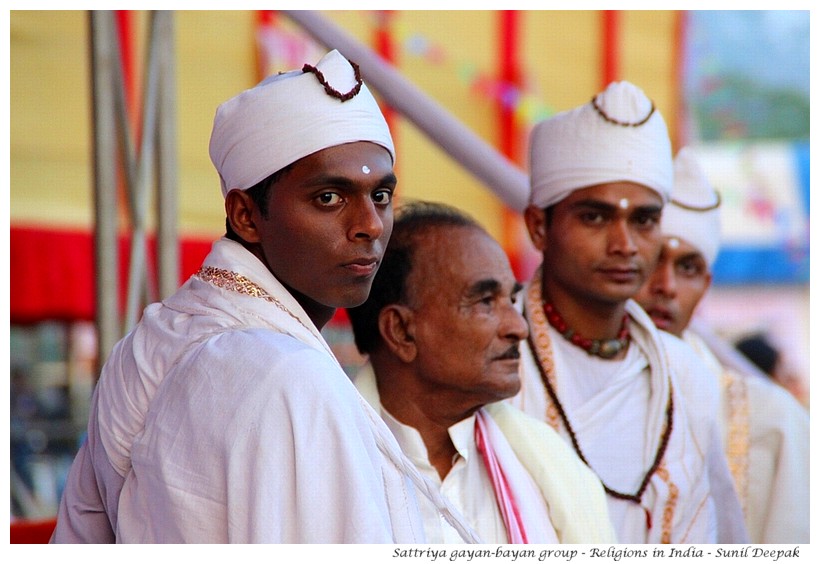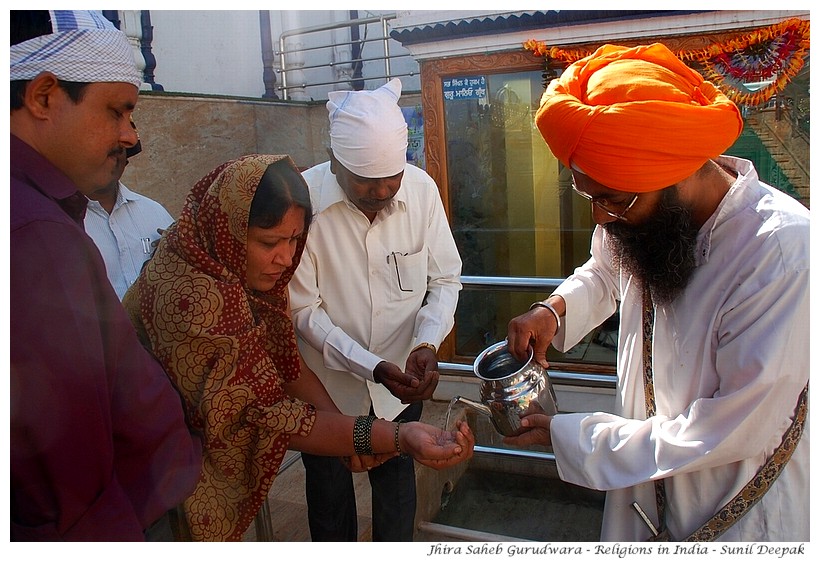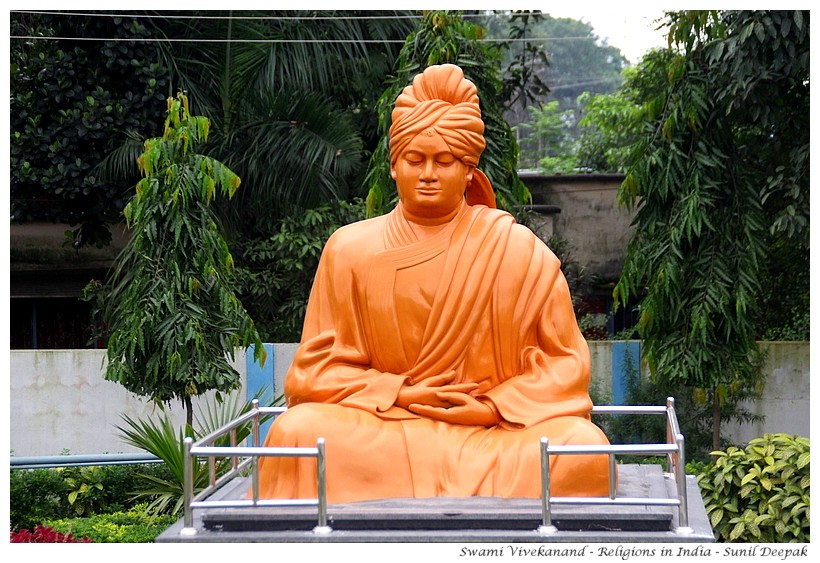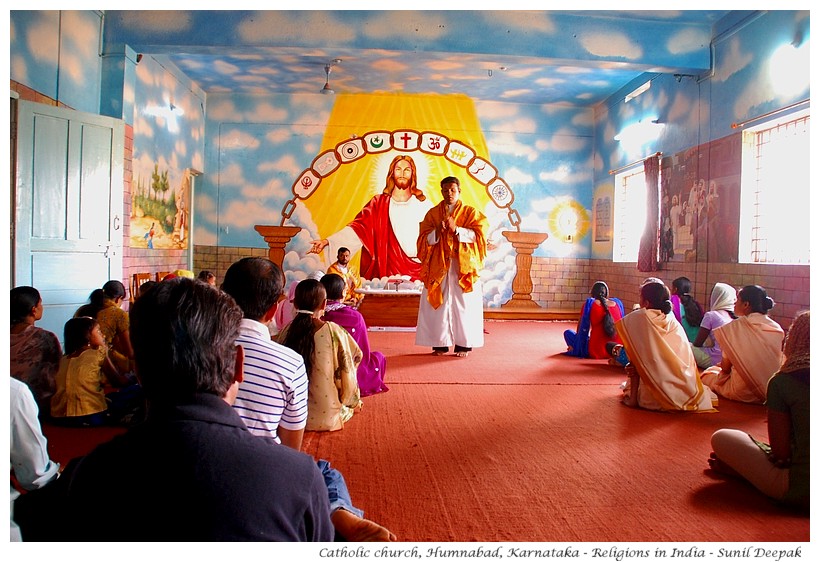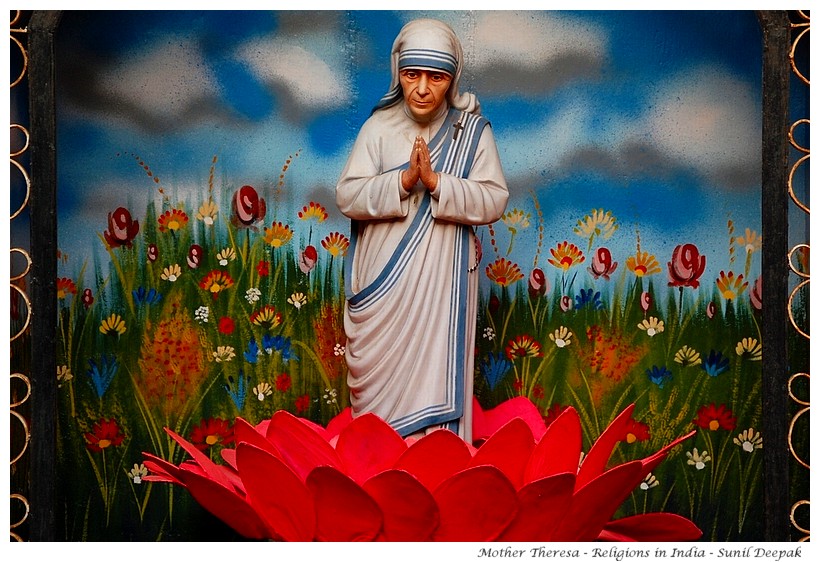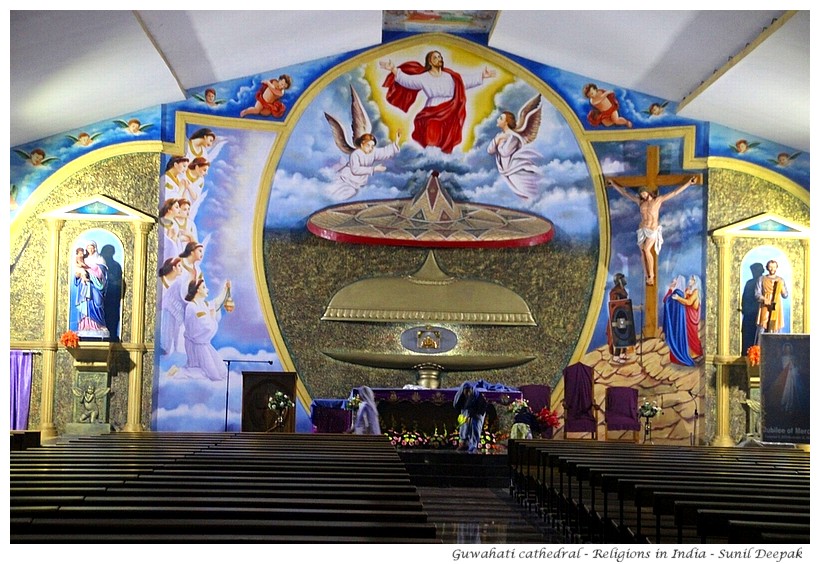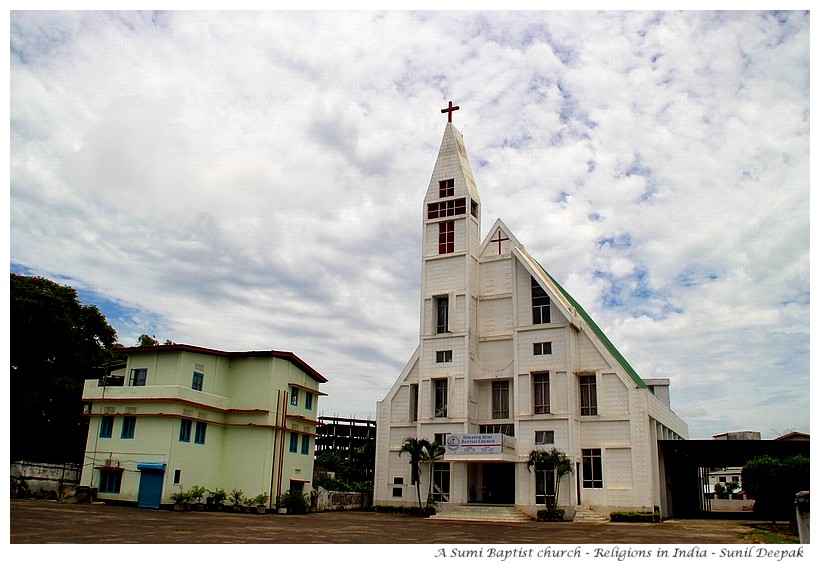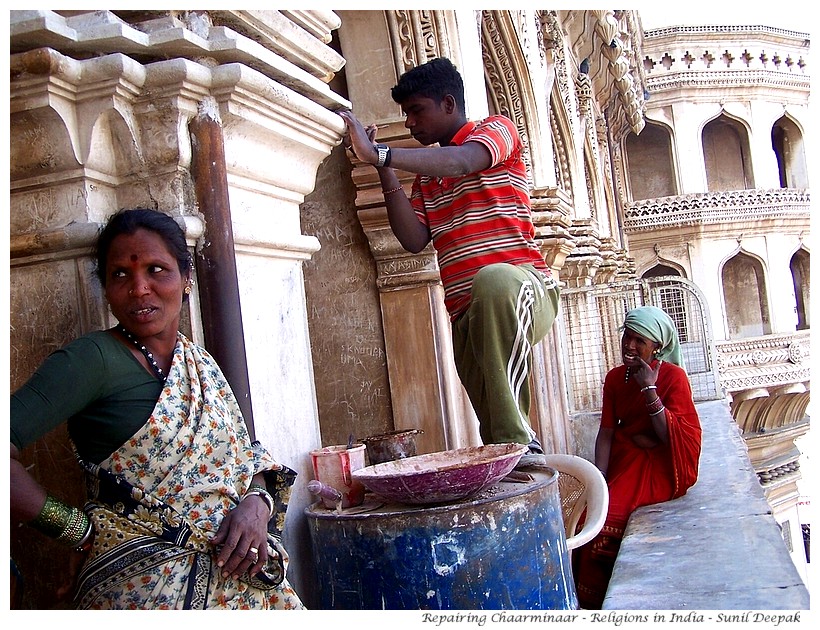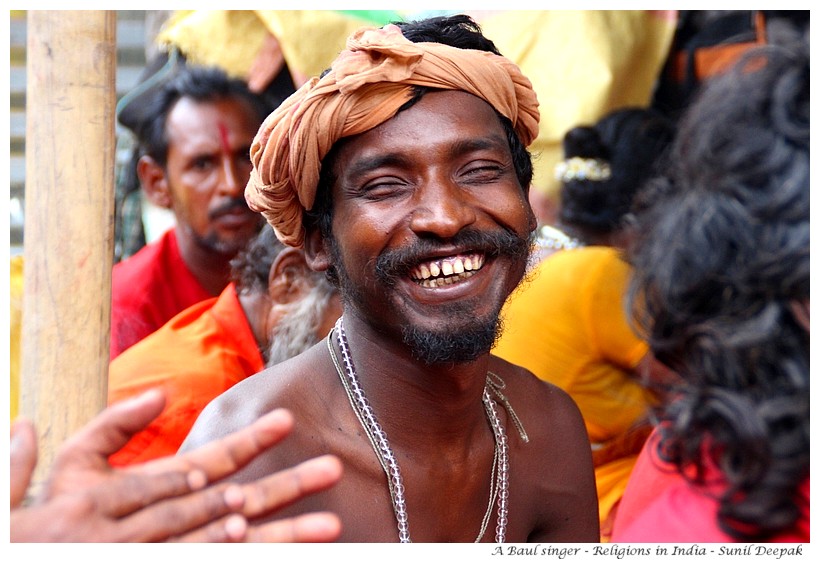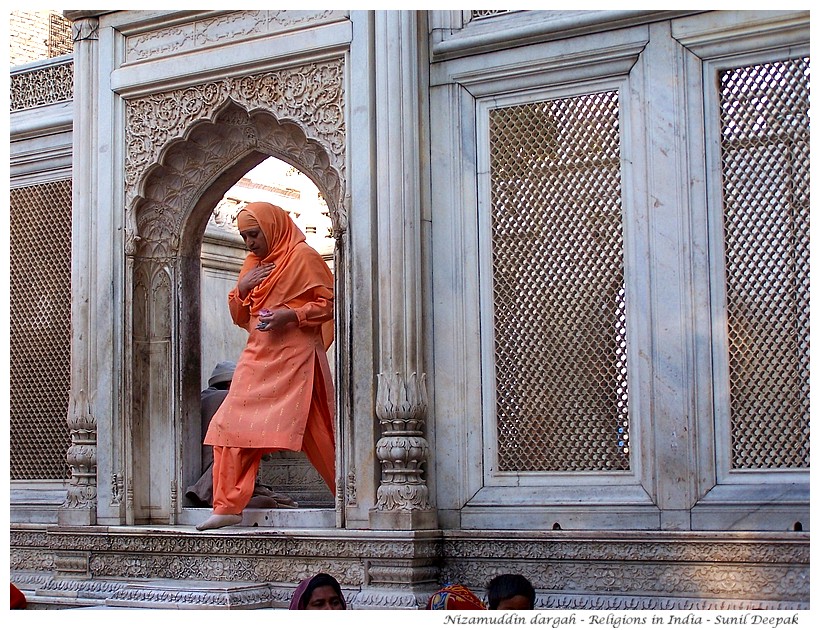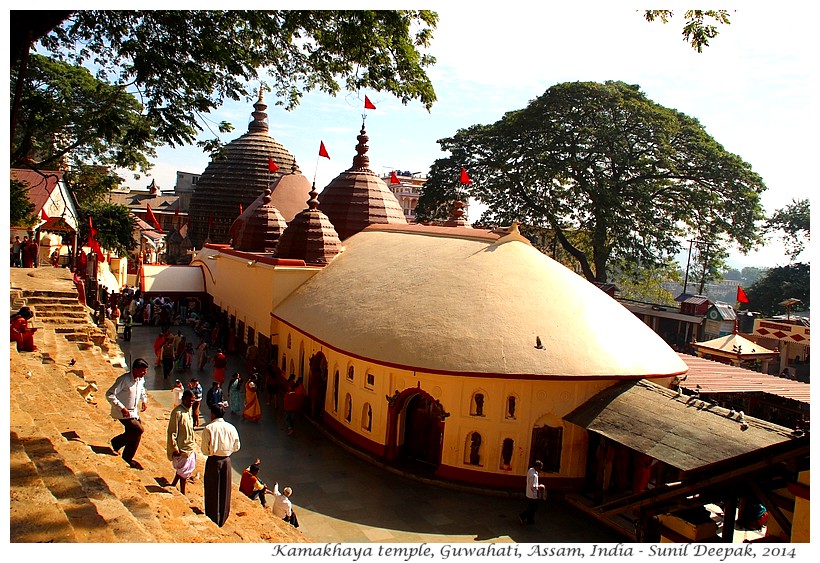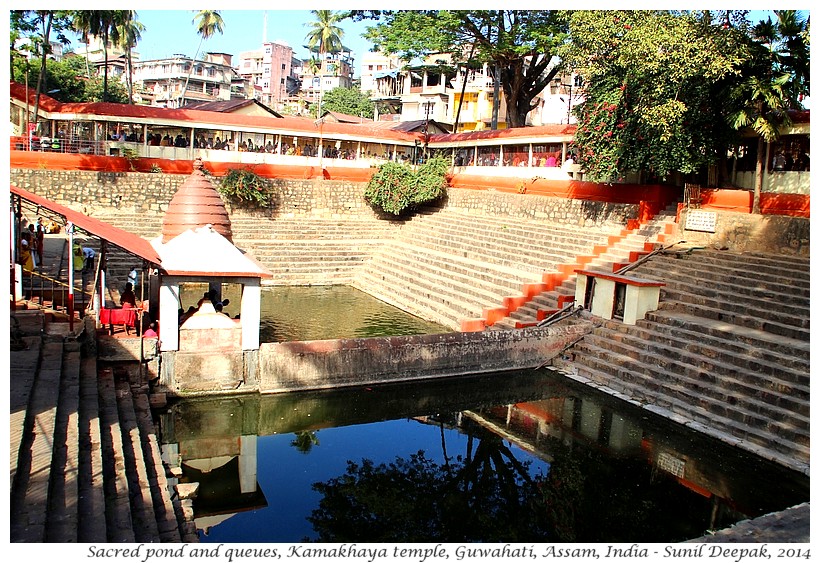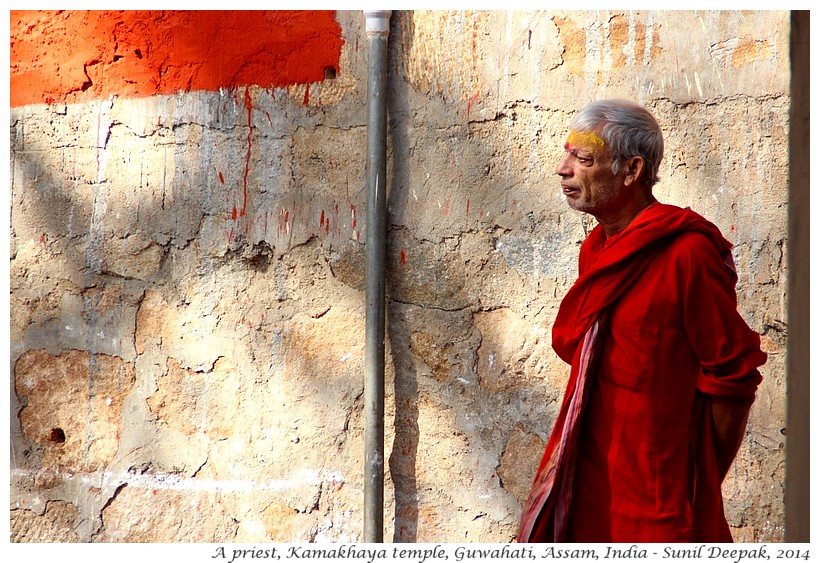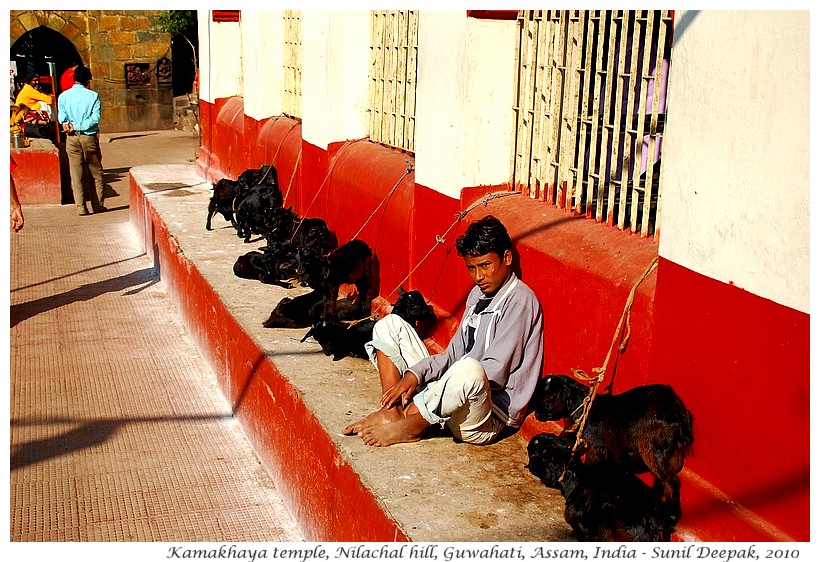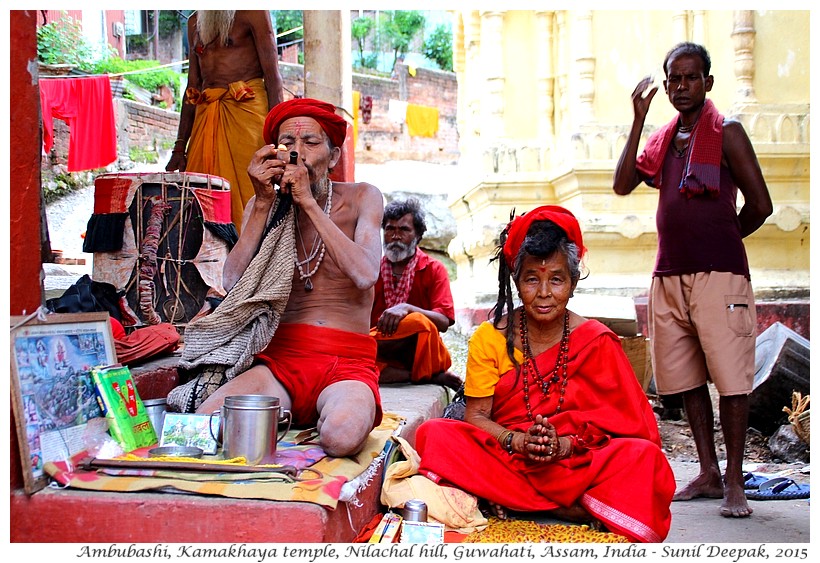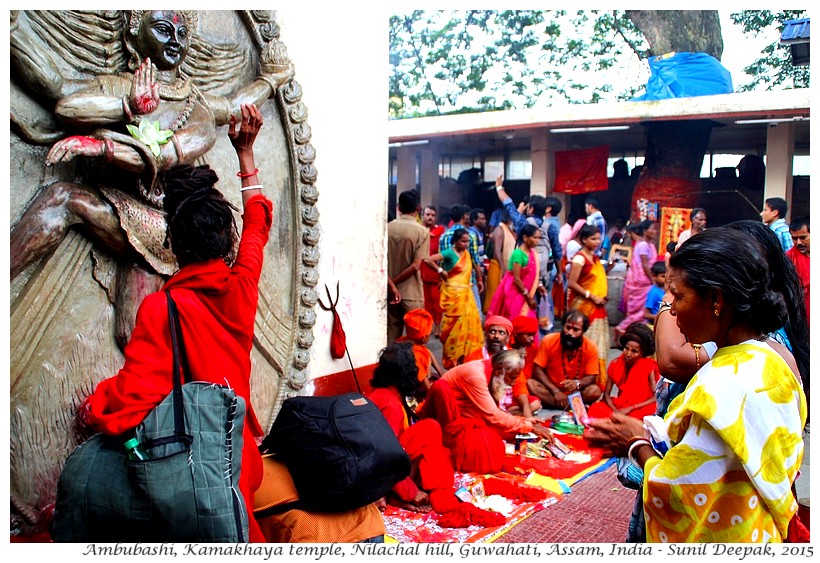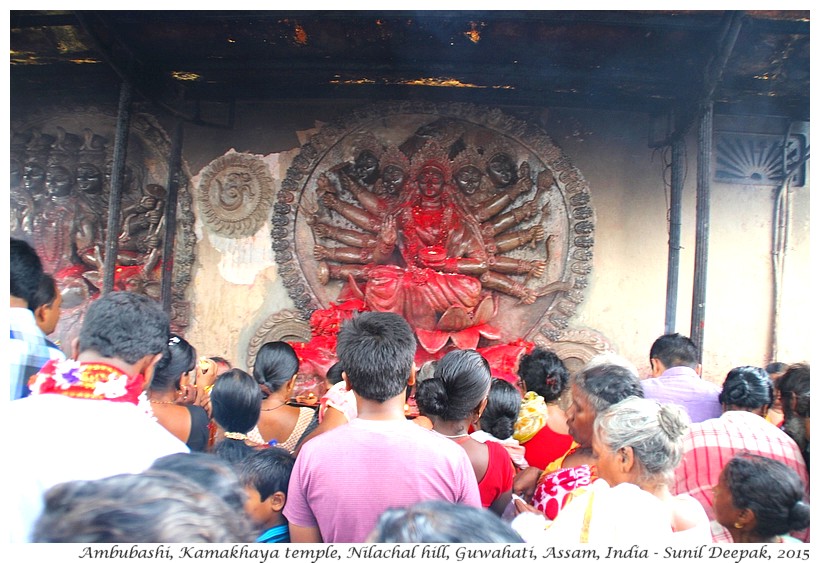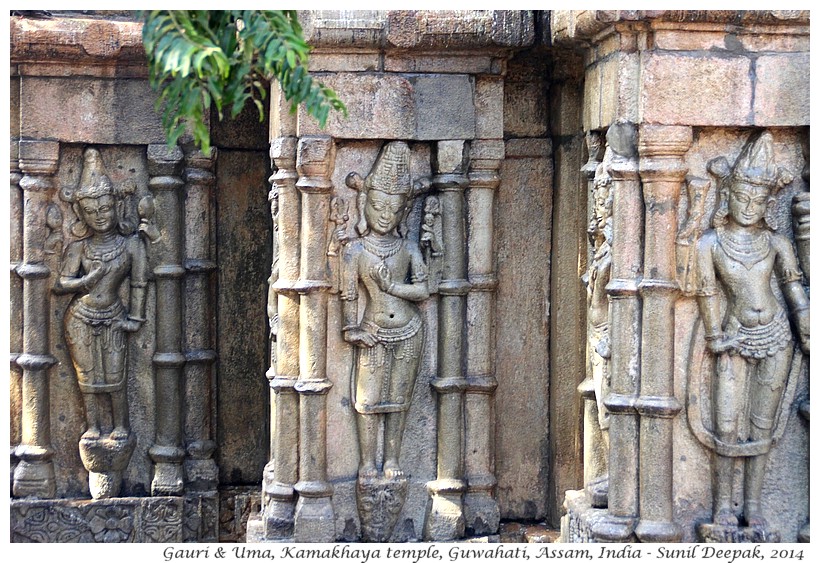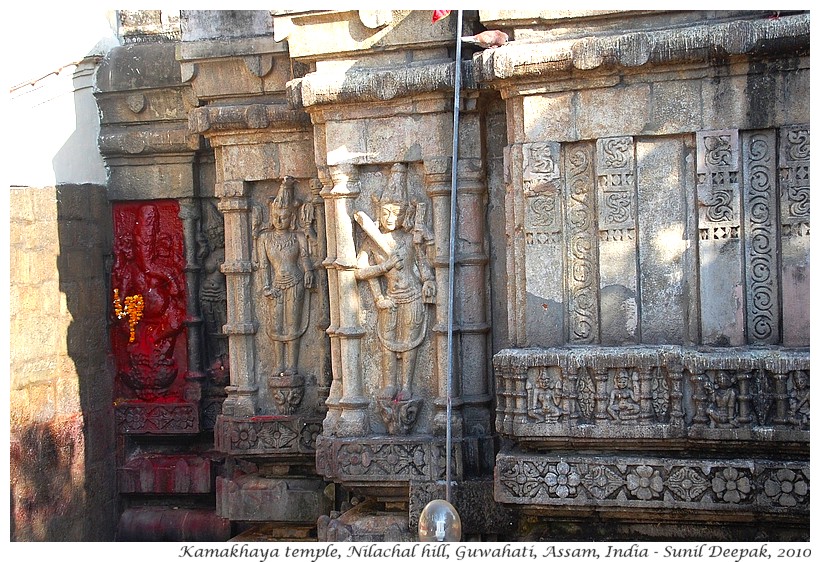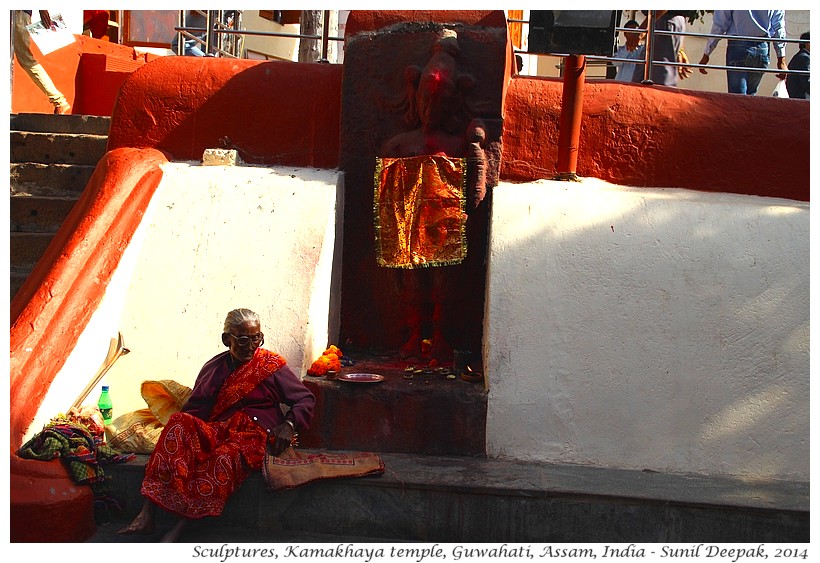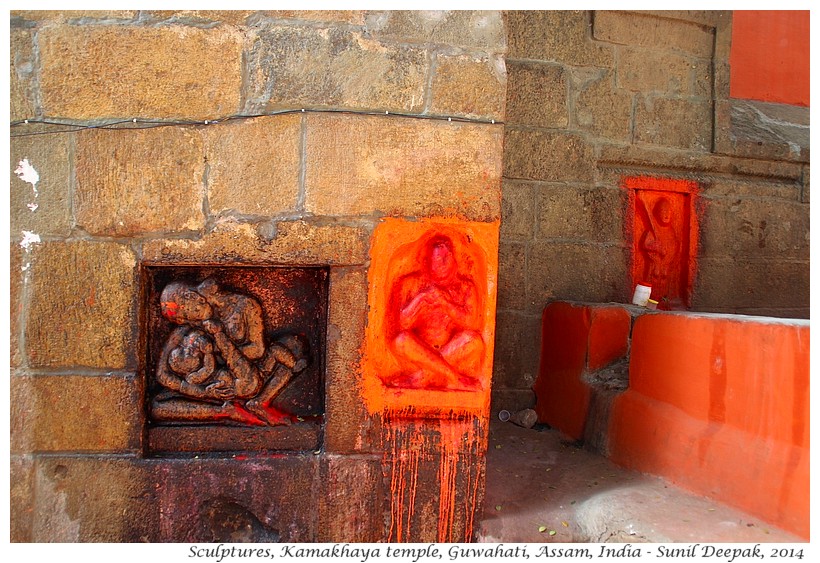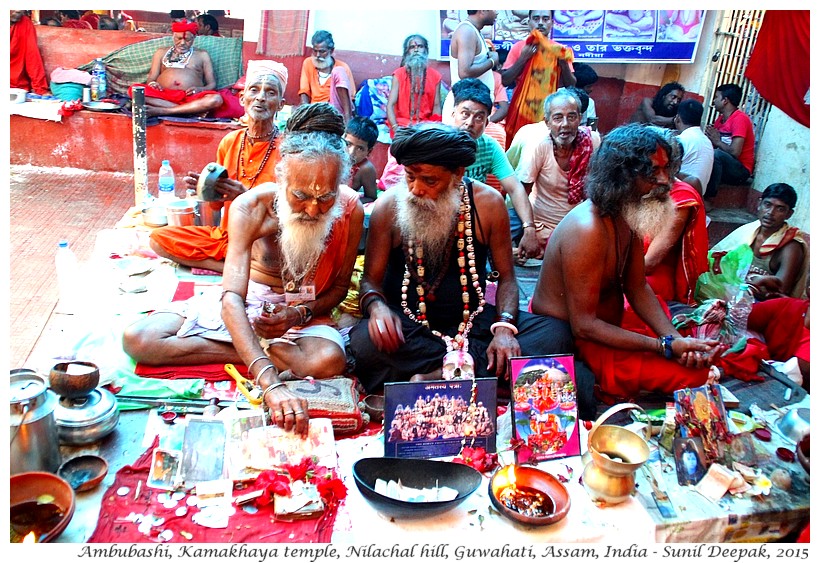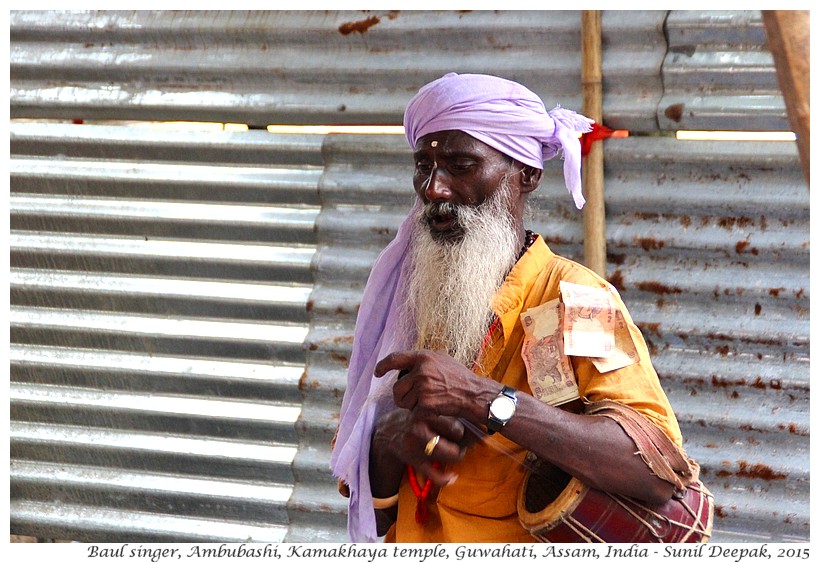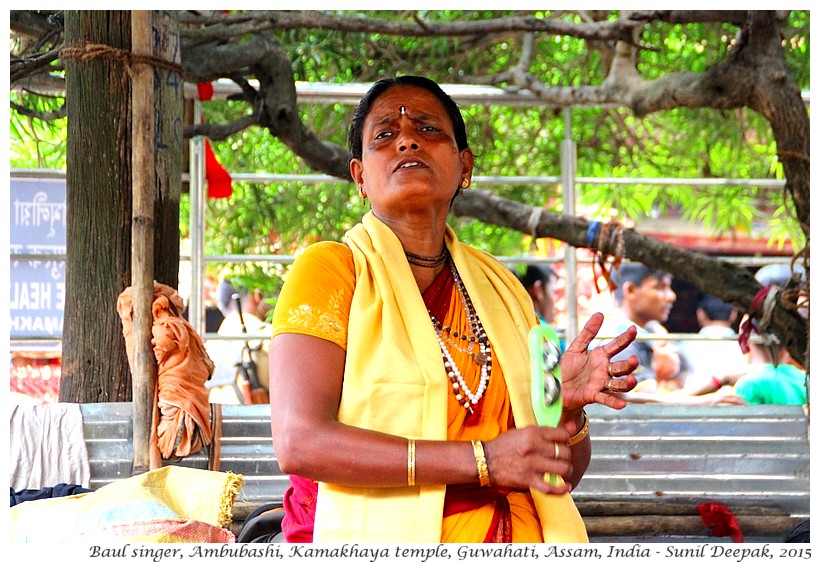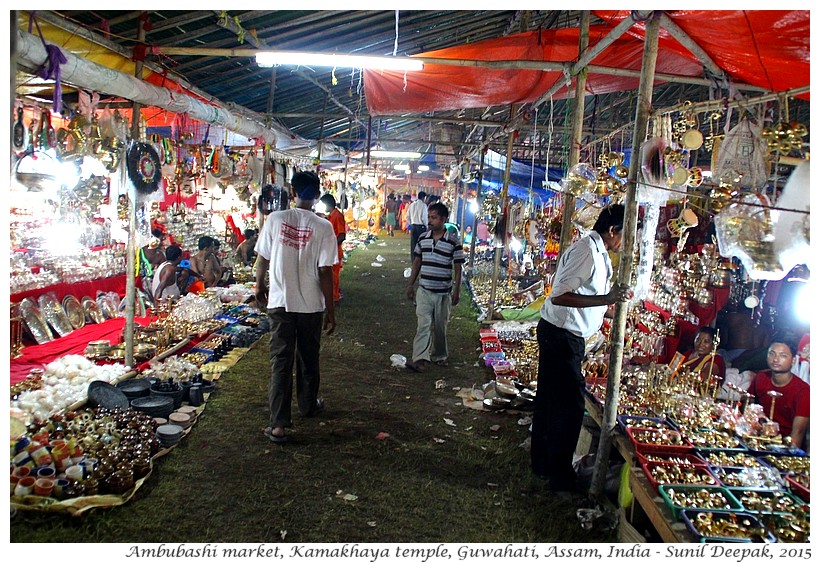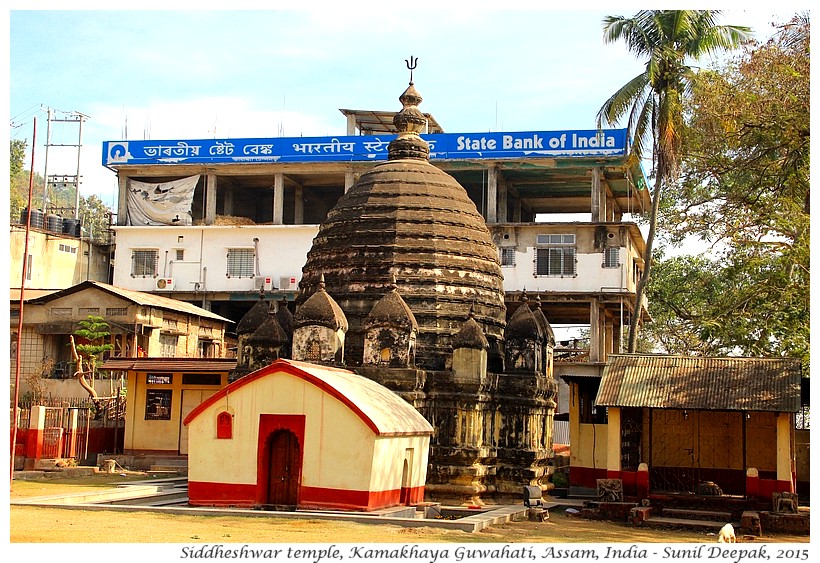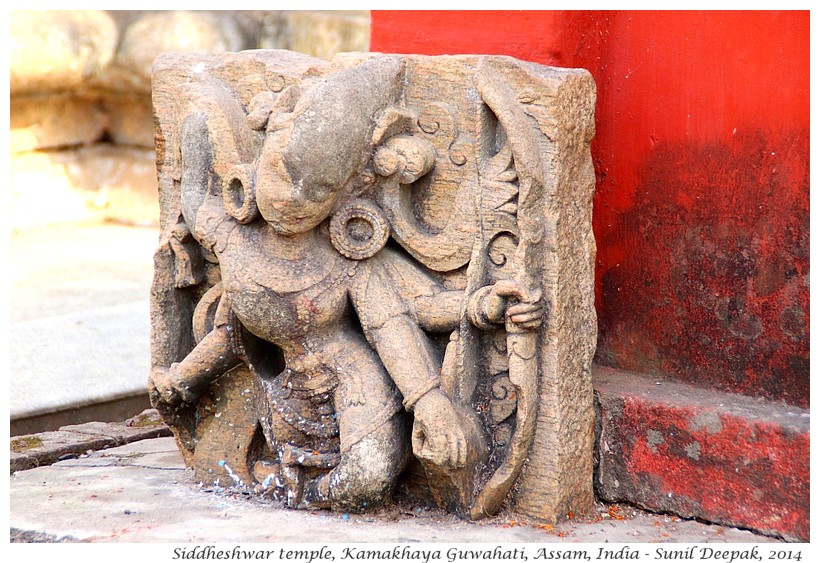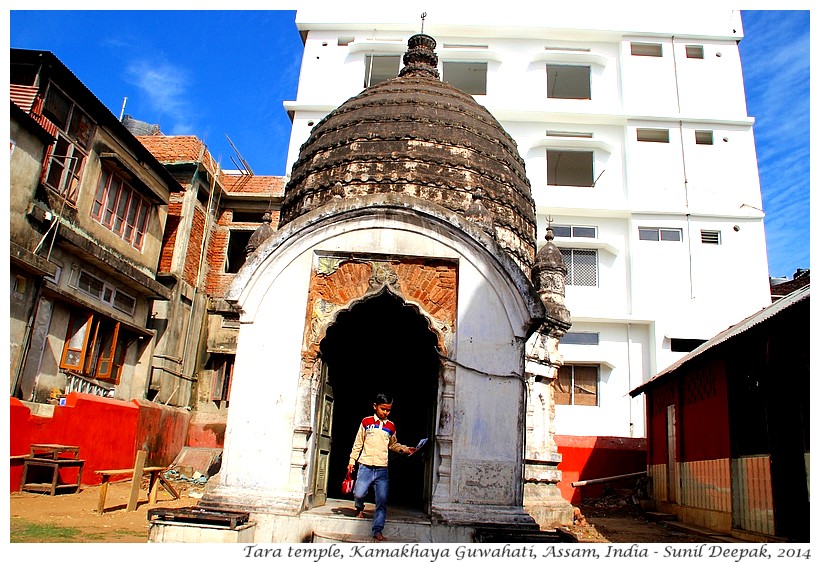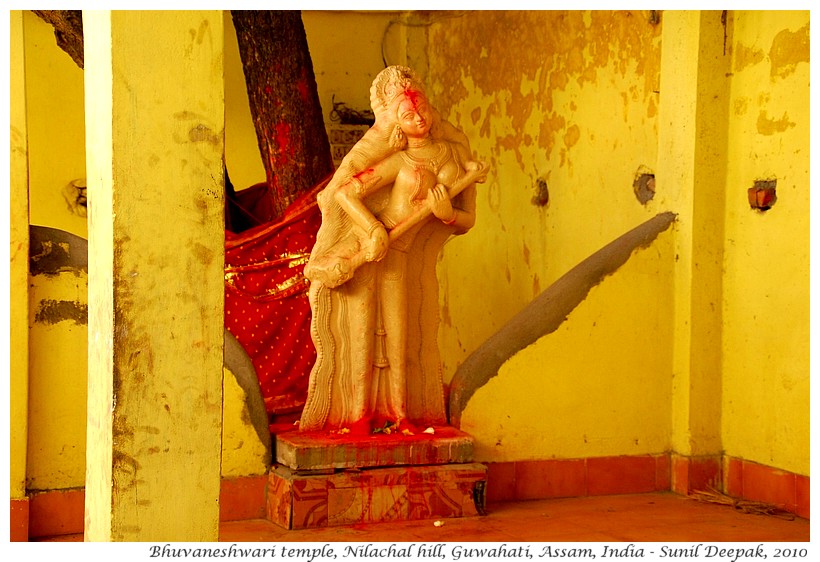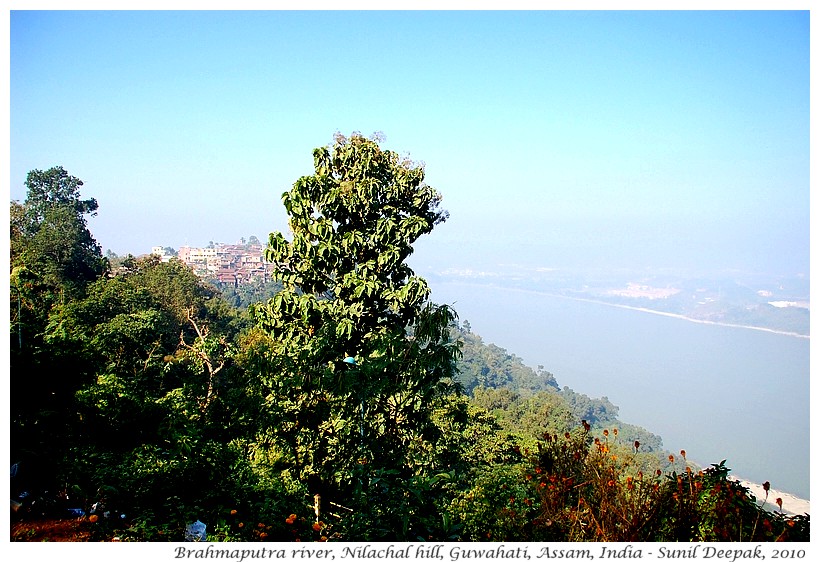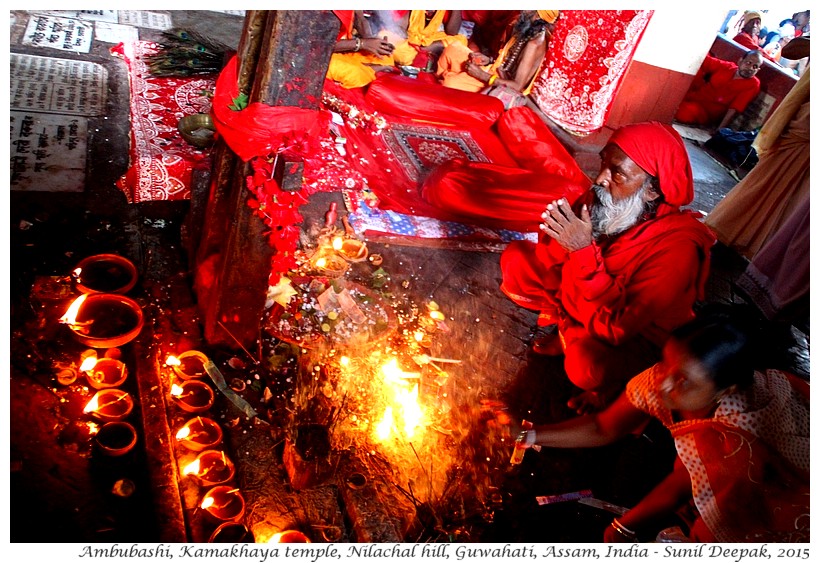If you could write just one prayer for India, which prayer would it be? Would it say something about the different religions in India?
This photo-essay is about inter-mixing and co-living of religions in India. It has twenty of my favourite images related to religions from different parts of India.
Let me start with an image - it has a
Sadhu, a saffron wearing ascetic. Sadhus wander from place to place, are not bound by caste boundaries and live on alms. A sadhu represents the ancient Indic tradition of spirituality, a personal search for a deeper meaning of life. This picture was clicked at Kamakhaya temple in Guwahati (Assam) in the north-east of India.
Growing up in a multi-religious India
My religious views have been shaped by my growing up in India, where I was exposed to different religions since childhood. My second image represents the two religions which are important in my family today and it is from Kerala at the southern tip of India. It was clicked in a transport van, and has the icons of Madonna and Ganesh on the dashboard.
I grew up in a Delhi, where my mostly atheist parents had many friends of different religions. Our extended family was mainly Hindu, though it had some roots that connected to both Sikhism and Islam. I learned about the different manifestations of religions through my extended family, neighbours and friends.
When I was a child, we moved from one rented house to another. For a time, we lived in a predominantly Muslim area, right in front of a Muslim graveyard. Watching the families visiting the graveyard, dressed in all their fineries during Idd festivals, was one of my favourite past times.
It was the time when in my mind, women wearing black burkas were associated with romantic Bollywood films like ‘Chaudhawi ka Chaand’ and ‘Mere Mehboob’, where Hindu heroes thought nothing of masquerading like elderly Muslim
ustaad ji and singing
shero-shaiyiri, so that they could enter as teachers in the homes of their beloveds.
In another house, which we shared with our Sikh landlord’s family, our terrace overlooked a Methodist church. All the children, including the Pastor’s son, played together. We woke up early in the morning to drink
Kacchi lassi on the days of Gurupurab (Sikh religious festivals) and I became familiar with recitations of their sacred book Guru Granth Saheb.
While I was a little afraid of the stern looking wife of the Pastor, I had no problems devouring her Easter cakes. The pastor’s son and the Sikh boys, they all joined me at Holi in throwing balloons full of coloured water on the unsuspecting persons walking on the road below our house.
In yet another house, our next door neighbours were Muslims. While our families were friends, we children played together and shared Idd and Diwali sweets, I never went to a mosque to do prayers with them. Muslim prayers required a complex mix of specific gestures and words which intimidated me. On the other hand, I did go once to a midnight Christmas mass with a Catholic friend.
This pattern of co-living and inter-mixing with persons of different religions has continued all through my life. It has made me understand that religions and beliefs are accidents, determined by our birth in a family and they are not superior or inferior, they are just different ways of approaching the human need for sacred.
The third image is of a roadside shop from Tezpur in Assam, selling pictures of religious icons. The shop was located close to the cathedral and a Hanuman temple, and thus had both Hindu and Christian icons, along with those of other national figures such as Mahatma Gandhi.
Indic religions
The search for the divine in India is like a tree with roots that go deep into the earth, and with branches going in different directions, pointing to different corners of the sky. Thus, an important part of the sacredness in India is about nature – about the rivers, ponds, trees, animals, birds and the earth.
My fourth image is from Bilaspur district in Chattisgarh in central part of India and has a simple Hindu temple in the middle of a pond. Through sacred ponds and rivers and through rituals like
surya namaskar, Indic religions remind me all the time about sacredness of nature.
I feel that “religion” is an inadequate term to talk about Hinduism. It includes people who identify the God in the nature – in rocks, mountains, trees, rivers, ponds, animals and birds. It includes people who worship a wide variety of Gods – from human forms of Ram, Krishen, Shiv, Durga, Kali, and Brahma, to human-animal forms of Ganesh, Hanuman, Garud and Sheshnaag. It includes people who believe in a different sacred book, sometimes in many books and sometimes in none of them. It also includes people who believe in fire worship (yagna), as well as those who believe in
nirankar (formless) all-pervading
Paramatma. That is why I prefer to see Hinduism, not as a religion, but as a
Sahasradhara, a river of thousand streams.
The next three pictures illustrate three streams of Hinduism. The first is from Karnataka, showing a procession when the deities are carried out of the temple to visit the village, accompanied by characters from the sacred epics of Ramayana, Mahabharata and Bhagwat Puran, which are widely known and even today continue to influence Indian society.
The second image about Hinduism is from the sun temple in Konark in Odisha on the eastern coast of India, where spirituality is explored through the sexual union on the temple walls. Hinduism recognises different approaches to the sacred including the path of worship, prayers and meditation but also the paths of work (Karmayoga), knowledge (Gyanyoga) and sex (Tantrism).
The third image is of Ghatotkach icons at Dushhera fair in Kullu in Himachal Pradesh, which represent mountain deities. There are thousands of such local deities in India, whose stories have been woven with the more prevalent figures of Ram, Krishan, Shiv, Durga, Lakshmi, Kali and Saraswati. Thus, the thousand streams of Hinduism keep on coming together and branching out in diverse directions through the inter-mixing of sacred stories and ancient myths in different parts of the country.
India is also home to hundreds of tribal communities. Nature worship is a central part of religious practices in the tribal communities. They also have many local deities, different from the more prevalent Hindu deities. Some of the tribal deities are part of the “enemies” in the Hindu mythological stories such as the figures of Ravan, Meghnath and Mahishasur. These stories point to a diversity in the way a wide variety of religious beliefs come under the different streams of Hinduism.
Often outsiders, when they read Indic epics and myths, think of these figures as “villains”, similar to the figures of devil or Satan. However, Indic way of thinking looks at them in more complex ways, recognising their positive attributes and often linking their stories to their different reincarnations. For example, during the enactments of Ramayan during the festival of Dusshera, people are sometimes surprised when they discover the Brahmins praying to the effigy of Ravan before it is burned.
Often while talking to friends from western countries, I feel that they look at Hinduism in a narrow way, focusing on a few figures such as those of the sacred Trimurti (Brahma, Vishnu and Shiva) and the sub-divisions of people into castes according to the Varna system. They ignore the thousand streams of Hinduism and their traditions of debate and arguments. They also tend to believe that the only social reforms and movements for greater social justice towards the marginalised Hindu caste groups in India came from the colonial powers and outsiders.
In a different way, some of the more shrill, conservative or radical Hindu groups echo similar kinds of thinking. They are afraid of the diversity of religious ideas of different streams of Hinduism. They ask repeatedly of following the examples of Abrahamic religions with one sacred book, one religious story and one religious leader.
Indic reformers and other Indic religions
Two millenniums ago, social and religious reformers like Gautam Buddha and Bhagwan Mahavir, infused new ideas in the Indic religions.
Over the past centuries, other reformers like Basvanappa, Akka Mahadevi, Shrimanta Shankar Dev, Chetanya Mahaprabhu, Meerabai, Sant Gyaneshwar, Sant Ravidas, Baba Nanak and Sant Kabir, have promoted a diversity of religious ideas touching on social harmony and justice in the Indic religions. This movement of social reform continues through more recent spiritual gurus including Swami Vivekanand and Dayanand Saraswati.
Some of these Indic spiritual figures and social reformers are considered as prophets of specific religions including Buddhism, Jainism and Sikhism. Western way of thinking believes in categorising and emphasising the differences between religions and sects. Indic view of religions, because of the dynamic nature of inter-mixing between them, tends to look at them as different streams flowing in the same direction.
The next six images are about these Indic spiritual and social reformers. The first image is from a street in Gangtok in Sikkim in Himalaya mountains of a Sleeping Buddha and a Buddhist monk. Buddhism continues to be an important religious force in India, especially through its adoption by Dalit caste groups, who see in it as an escape from the caste-oppression.
The second image has a giant statue of the Jain icon Bahubali from Shravan Belagola in Karnataka. Jainism is characterised by the principles of non-violence and vegetarianism.
The third image is of a giant statue of Basvanappa, a medieval social reformer and a poet-saint from Bidar district in northern Karnataka. He continues to be a revered figure to millions of persons and promoted a casteless society.
The fourth image has Gayan-Bayan singers from a Sattriya in Majuli island of Assam. The reformist movement of Namghars and Sattriyas in Assam was launched by a fifteenth century social reformer, Shrimanta Shankar Dev, who had also promoted a casteless society. Like Basvanappa in Karnataka, the ideas and teachings of Shankar Dev continue to have an enormous influence in Assam.
The fifth image of this group is from Jhira saheb Sikh Gurudwara in Karnataka, where a Sikh granthi distributes the water from a sacred spring to persons of different religions. The Sikh religion emphasises the value of Karmayoga or prayer through action.
The sixth and last image in this group is that of Swami Vivekananda, whose teachings about revitalising Hinduism had a strong impact in India of the twentieth century.
These images of spiritual and social reformers of India, are just a tiny example of the wide variety of Indic spiritual beliefs. Some like Basvanappa and Shrimanta Shankar Dev have millions of followers, though they are not considered as separate religions. Others like Buddha, Mahavir and Nanak are considered as prophets of specific religions. In many Indian homes, often you can find icons and statues of many of them.
Religious ideas from other parts of the world
From ancient times, India has been the land of mixing and assimilation of religions, beliefs and cultures.
Over the centuries persecuted people from around the world, such as Jews, Armenians, Parsi (followers of Zarathustra) and Baha’i (followers of Bahai’ullah), came to settle in India, conserving their religious identities and ideas, even while exchanging some ideas with the Indic ideas of sacred.
Wandering mystics, explorers and conquering armies have brought other religious ideas to India including those of Islam and Christianity. Like other arrivals before them, India promotes both conservation of identities and ideas, as well as their inter-mixing with Indic ideas of sacred, thus giving birth to new identities and ideas.
The first ideas of Christianity came to southern coast of India with St. Thomas, more than two thousand years ago, even before there was a Vatican. Colonialism and globalisation in the past centuries have brought different streams of Christianity to India. Thus, while Christians constitute only 2% of Indian population, they are a majority in some states of India and have a strong influence in society through their schools, hospitals and programmes of social development.
I am presenting four of my images about Christianity in India. The first image is of a church in Bidar district in Karnataka. While the priests have a saffron shawl on their shoulders (saffron is traditionally the colour of Hindu ascetics in India), and sit on the floor, the church wall carries symbols of all the different religions.
The next picture is again from Karnataka in south India, and has a statue of Mother Theresa. She is widely revered by persons of different religions in India.
The third image is from the Catholic cathedral in Guwahati, which shows two symbols of Shrimanta Shankardev behind the altar – the traditional Assamese head-gear and the cymbols, adapted as Christian symbols.
The last image about Christianity in India has a Methodist church of the Sumi tribe in Nagaland. As tribes have different languages, even if they belong to the same religion, they can have separate churches. For example, near the church shown in the picture, Chakhesang tribe has their own Methodist church.
Islam first arrived in India around one thousand years ago and since then has expanded in different parts of India. After Indonesia, India is home to largest number of Muslims in the world.
One important icon of Hindu-Muslim inter-mixing is Bhakt Rahim from 16th century India, who was a minister in the court of Mughal emperor Akbar and at the same time, a writer fluent in Turkish, Persian, Sanskrit and Braj bhasha. Thus while he translated Babarnama, the autobiography of Mughal emperor Babar, from Turkish to Persian, he is also considered a part of Indic social reformers for his devotional
dohas (couplets) in Braj bhasha. In these prayers, he used Hindu religious imagery to express himself. For example, look at following doha of Rahim where is uses the word "Hari" to talk about God:
Rahiman gali hai sakri, dujo nahi thaharai
Apu aahai to Hari nahi, Hari to aapun nahin
(Rahim, the street is narrow and two persons can’t pass it together; if I will go inside God cannot, if God enters it, I cannot).
The last three images of this photo-essay are about Islam. The first image shows a group of Hindu labourers working in Char Minar, a Muslim building in Hyderabad in Andhra Pradesh. Built by Mohammed Qutb Shah in 1591 to commemorate the end of plague, the ground floor of this building hosts both a mosque and a temple. Similarly, for many Hindu festivals, traditionally the icons are made by Muslim craftsmen.
The second image of this group has a Baul singer from the north-east of India. The Baul tradition includes both Hindus and Muslims, and is about devotional music sung by wandering mistrels, who travel in the countryside ignoring the religious boundaries.
The last image of this group is from the Dargah of Hazrat Nizamuddin Auliya in Delhi, that hosts the tomb of a Muslim sufi saint, widely revered by persons of different religions.
Parsi and Baha’i, the followers of Zarathustra and Bahai’ullah, who came to India from Persia/Iran, are less numerous, but equally important. For example, Delhi hosts the lotus shaped Baha’i temple, the biggest temple of the followers of Bahai’ullah in the world.
Valuing Inter-mixing of Religions in India
A closer look into religious beliefs in India, shows that often, the inter-mixing and blurred boundaries between the religions are more important than the perceived differences. By promoting inter-mixing, we promote understanding and love between people of different religions.
The world today is full of examples of religious hate and misunderstandings. To overcome these divisions, the approach chosen by many countries and persons is that of "respect and tolerance" along with political correctness. The basic idea of this approach is that the religions are different and we should avoid hurting the religious sentiments of others. Therefore, these countries propose to not to put up Christmas trees so as to not offend the non-Christians; they suggest to use words like "Seasons greetings" rather than "Idd greetings", so as to not to offend non-Muslims.
I personally feel that such an approach makes all of us poorer. I prefer the Indian way where we all celebrate all the festivals of all the religions, where we can pray in each other’s praying places, without losing our own cultural and religious identities.
People who believe in the separateness of their religions, they are afraid of such an approach of inter-mixing. India shows that you can still be a Hindu, Muslim, Christian or Sikh, even if you share the religious and sacred ideas, foods and festivals of others.
For this reason, I believe that in India we must learn to value our inter-mixing approach. One way to do it will be by recognising those of us who are mixtures of linguistic, regional, castes and religious identities. For example, I feel that the national census in India should collect information about the different ways we intermix and the number of mixed families in the country.
Religious fundamentalists oppose inter-mixing of religions, Indian approach teaches us to promote it. Children of the mixed families who will have the freedom to choose their religions, will be the ambassadors of inter-religious peace.
Another way to support inter-mixing of religions in India can be by recognising as valuable all those celebrities who are widely known and admired and who are part of inter-religious or inter-caste marriages. For example, Bollywood stars with their multi-religious families, from Sunil Dutt-Nargis and Kishore Kumar-Madhubala, to Shahrukh-Gauri and Saif-Kareena, are examples of religious inter-mixing and joyful co-living not only for India but for the whole world. In a deeply divided world, they are our icons of unity, without losing our individual religious and cultural identities.
Your prayer for India
So to come back to my original question - if you could write just one prayer for India, which kind of prayer would it be?
Will it have different Gods including Ishwar and Allah? Will it be about different prophets such as Buddha, Mohammed, Jesus, Nanak, Mahavir, Zaruthustra and Bahai’ullah? Will it be about different paths leading to one
Parmeshwar?
I hope that you will answer yes. I hope you will ask for the one life-force that underlies everything organic and inorganic in the cosmos. I hope that it will be a prayer that will promote peace, love and harmony.
***




